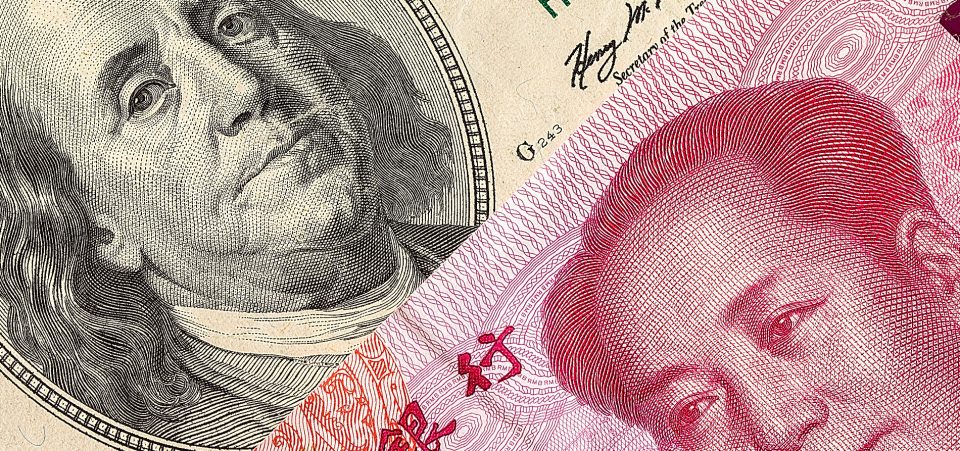Chinese Yuan Threating U.S. Dollar Dominance
Mark these words; the U.S. dollar could lose a lot of value in the next few years. The greenback has declined over nine percent since the beginning of 2017 relative to other major currencies and more of the same could follow going forward in 2018 and beyond.
You see, there’s only one thing keeping the value of the dollar strong; the U.S. dollar is used in trade across the globe and is easily available.
Sadly, if you look at the real fundamentals of the dollar, they are weak. The U.S. national debt is soaring, there’s a lot of political uncertainty, U.S. growth rate is dismal, consumers are struggling, and the list goes on. All of these factors actually impact currencies negatively.
Here’s the thing; there’s now an emergence of a new currency, the Chinese yuan. It could hurt the U.S. dollar dominance.
The second-biggest economic hub in the global economy is doing everything it can to make its currency as relatively usable as the dollar across the globe.
Three Things Investors Must Pay Attention To
How is China making sure its currency becomes dominant? There are essentially three things that are worth paying attention to.
First, China is making sure the currency is backed by something real.
China is in the process of doing this. The People’s Bank of China is adding gold to its foreign reserves. If you look at major currencies, their central banks usually own a lot of gold. For example, look at the U.S. Federal Reserve. It holds a massive amount of the yellow precious metal.
Second, China is making sure the currency is available globally and trades freely.
China is making solid strides regarding this. We are seeing a lot of so-called “Yuan trading hubs,” pop up. Essentially, these are places where the Chinese yuan could be bought and sold.
What’s also interesting to note here is that major banks are starting to accept the fact that yuan is worth working with. For instance, not too long ago, we heard Citigroup Inc (NYSE:C) and HSBC Holdings plc (ADR) (NYSE:HSBC) increase their staff and locations where yuan is offered. (Source: “Global banks sharpen focus on yuan offerings as China’s Silk Road fuels demand,” Reuters, September 26, 2017.)
Third, the yuan is being accepted as something worth holding and doing business with.
Know that until recently, oil, for example, was only quoted in the U.S. dollar terms.
China is expected to launch oil futures contracts denominated in yuan and they could be converted into gold. This is being dubbed as a game changer for the industry. This will allow oil producers to not use the U.S. dollar. (Source: “China sees new world order with oil benchmark backed by gold,” Nikkei Asian Review, September 1, 2017.)
Central banks around the world are starting to hold yuan in their foreign reserves as well. The currency was added to the International Monetary Fund (IMF) Special Drawing Rights (SDRs), and as of the first quarter of 2017, central banks held $88.54-billion worth of yuan. (Source: “Currency Composition Of Official Foreign Exchange Reserves (COFER),” International Monetary Policy, last accessed September 28, 2017.)
U.S. Dollar Outlook: Yuan Makes a Strong Case for Weaker Dollar
Dear reader, I understand that what I said earlier about the U.S. dollar may not be the most popular opinion these days. But it’s important to look at what’s happening.
Obviously, for the yuan to come even close to the dominance of the U.S. dollar, it’s going to take a lot of time and some could even question if it will ever happen.
Here’s the thing; in the midst of all this, there could be a lot of volatility in the U.S. dollar relative to other currencies, and we could see the greenback plummet in value.
Keeping all this in mind, I can’t help but look at gold. The yellow precious metal could provide wealth preservation for investors when the dollar declines in value.






